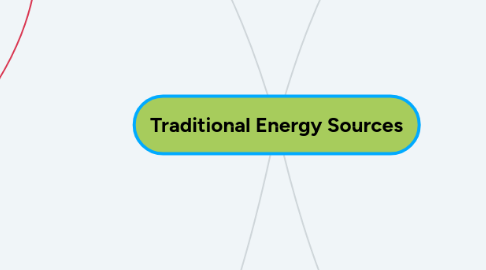
1. Coal
1.1. Formed by dead flora and fauna
1.1.1. Coal formed in 3 stages
1.1.1.1. Humification
1.1.1.1.1. Thick peat accumulates over a sustained period of time in a bog
1.1.1.2. Compaction
1.1.1.2.1. peat from earlier is crushed and water and gas in it escapes, becomes more dense
1.1.1.3. Coalification
1.1.1.3.1. progressive physical & chemical changes because of increased temperature and pressure
1.2. Coal Mining
1.2.1. Pillar and stall
1.2.2. Bell pit
1.2.3. Longwall mining
1.3. Finding coal fields
1.3.1. seismic surveying
1.3.2. exploration mine shafts
1.3.3. surface features
1.3.4. maps
1.4. Coal reserves
1.4.1. l depend on whether deposits are economic to mine
1.4.2. global reserves of 984.5 × 10^9 t of coal
1.4.3. less demand for coal now
2. Oil/Gas
2.1. petroleum
2.1.1. Formed by dead flora and fauna
2.1.1.1. mainly made from hydrocarbons, nitrogen, oxygen and sulfur
2.1.1.2. can be liquid (oil), gaseous (natural gas) or solid (bitumen)
2.1.1.3. needs source, maturation, migration pathway and trap
2.1.1.4. formed from kerogen
2.2. oil drilling
2.2.1. main environmental risk in drilling comes from accidental spillage
2.3. finding oil/gas fields
2.3.1. always stored in limestone or sandstone
2.3.2. always capped with impermeable seals
2.3.3. main method - seismic exploration
2.4. oil/gas reserves
2.4.1. primary methods only let 30% of petroleum be accessed
2.4.2. hubbert's peak
2.4.3. 1 trillion barrels of oil
2.4.4. 180 trillion m^3 gas
3. Nuclear
3.1. energy result of nuclear fission
3.1.1. uranium 235 most common fuel, some also use uranium 238
3.2. "new" technology
3.2.1. most reactors built 1960's-2000's
3.3. cost
3.3.1. more expensive than fossil fuels
3.3.2. cost of building reactors
3.3.3. cost of decomission
3.3.4. costly and hazardous waste
3.4. source
3.4.1. uranium mined in surface and underground mines
3.4.2. underground more expensive but higher grade uranium
3.5. price and reserves
3.5.1. cheap in 80's and 90's, more expensive now
3.5.2. reserve of 3.5 million tonnes
3.5.3. but nuclear power is unpopular due to hazard involved with it
3.5.4. no real way to get rid of nuclear waste
4. Future Energy
4.1. energy consumption up massively in last 100 years
4.2. global dominance of fossil fuels
4.2.1. leads to methane, co2, sulfur emissions
4.3. depletion of fossil fuel reserves
4.3.1. hubbert's peak - try to predict fuel resources
4.4. phasing out fossil fuels
4.4.1. coal mine closures
4.4.2. oil industry waining
4.4.3. gas still used, will have to be phased out
4.5. future energy sources
4.5.1. renewables
4.5.1.1. wind
4.5.1.2. solar
4.5.1.3. hydroelectric
4.5.1.4. geothermal
4.5.1.5. tidal
4.5.2. nuclear
4.5.3. potential use of hydrogen as it is abundant everywhere
